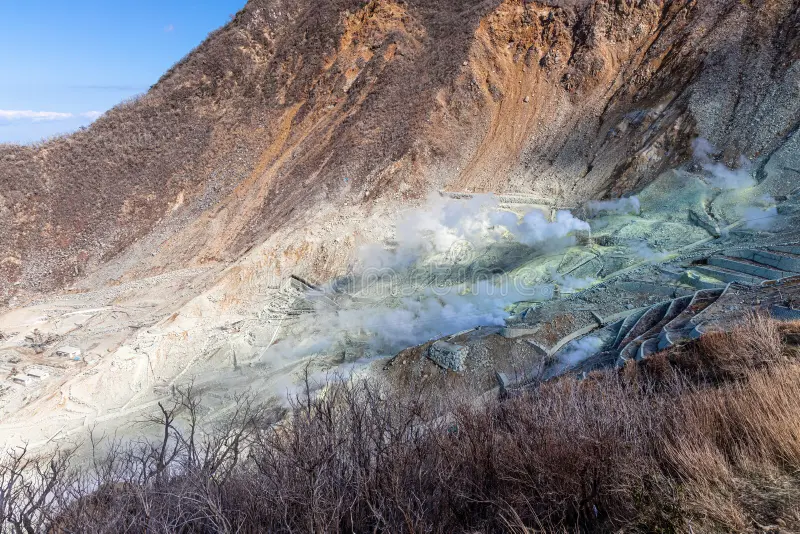
Imagine a place where the Earth hisses, belches sulfur, and constantly exhales white plumes of steam into the sky. A place where black eggs are boiled in volcanic springs and eaten to gain extra years of life. Welcome to Owakudani—one of Japan’s most unusual and naturally hostile locations, and one that feels like it sits right at the edge of the spirit world.
Nestled in the Hakone region of Kanagawa Prefecture, Owakudani is often called “The Great Boiling Valley.” It’s an active volcanic zone born from the eruption of Mount Hakone over 3,000 years ago. And it hasn’t stopped smoking since.
The Heart of a Sleeping Volcano
As you arrive at Owakudani—often via the scenic Hakone Ropeway—you’re greeted by the unmistakable smell of sulfur. The land is torn open, streaked with yellow, and constantly alive with the sound of bubbling water and escaping gas. It looks like a wasteland. But it’s beautiful in its own haunting way.
Steam vents jet into the air like geysers from a sci-fi movie. The earth beneath your feet is warm, and signs warn of volcanic gases that could be dangerous to those with asthma or heart conditions. Yes, this is still an active geothermal zone, and yes—it demands respect.
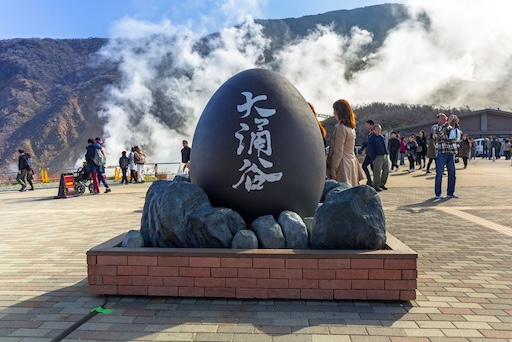
Why Is It So Famous?
Owakudani is famous not just for its natural ferocity, but for a quirky, culinary legend: the black eggs, or Kuro-Tamago. These are regular chicken eggs boiled in the area’s naturally hot, sulfur-rich water. The minerals turn the shells jet black, giving them an otherworldly appearance.
The story goes that eating one black egg will extend your life by seven years. Eat two, and you get fourteen. But don’t get greedy—three might anger the mountain spirits. It’s a local superstition, sure, but most visitors can't resist trying at least one.
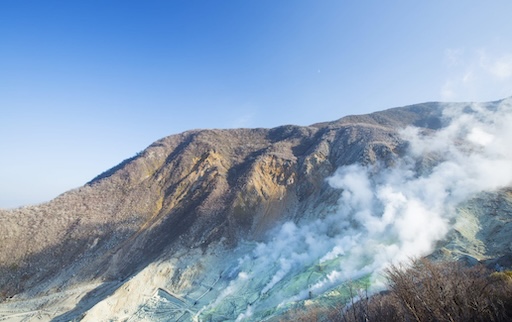
Legends in the Steam
Owakudani is more than just geology—it’s mythology. In Japanese folklore, volcanic areas like this are often associated with oni (demons) and angry mountain gods. Locals once feared the valley and avoided it, believing it was a cursed or sacred space where spirits gathered to cleanse or punish.
Even today, when the wind shifts and mist wraps around the valley, it’s easy to feel like you’re walking through a world where science and spirits overlap. The Earth moans. The rocks sweat. The sky hangs heavy. There’s a sacred unease that lingers in the air.
When to Visit
- Spring (March–May): Cherry blossoms in nearby areas make the contrast with the volcanic landscape even more surreal.
- Autumn (October–November): Crisp weather and fewer tourists make for a more mystical, solitary experience.
- Avoid during heavy volcanic activity: Sometimes, Owakudani is closed for safety due to high gas levels or seismic events. Always check local advisories before your visit.
Getting There
- From Tokyo: Take the Odakyu Romancecar or JR trains to Hakone-Yumoto Station, then transfer to the Hakone Tozan Railway and Ropeway.
- By Car: Parking is available but limited. Sulfur fumes may be strong, so take necessary health precautions.
- Ropeway: The Hakone Ropeway offers a stunning panoramic view of the valley and even Mount Fuji on clear days.
A Hidden Wonder Worth the Sulfur
Owakudani is not your average travel destination. It doesn’t pamper, it doesn’t pretend. It smokes, it stinks, it boils. And yet—it lures. There’s something about this scorched valley that sticks with you long after you leave. It’s raw nature. Japan unplugged. A reminder that the Earth is alive, and sometimes, a little angry.
So grab a black egg, breathe the sulfur (carefully), and stare into the steaming wounds of the planet. This is Owakudani. Beautifully bizarre. Wonderfully unsettling. And totally unforgettable.
Share this story and inspire others.
Tags: Japan, Owakudani, Hakone, Volcanic Valley, Black Eggs, Kuro Tamago, Natural Wonders, Offbeat Travel, Mysterious Locations, Kanagawa Prefecture, Chasing Hidden Wonder
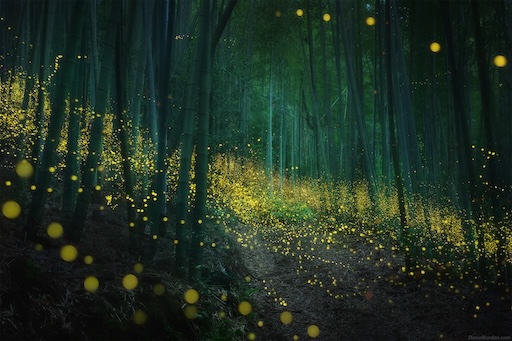 Firefly Phenomenon (Hotaru Season) – Magical Nights in Japan
Firefly Phenomenon (Hotaru Season) – Magical Nights in Japan
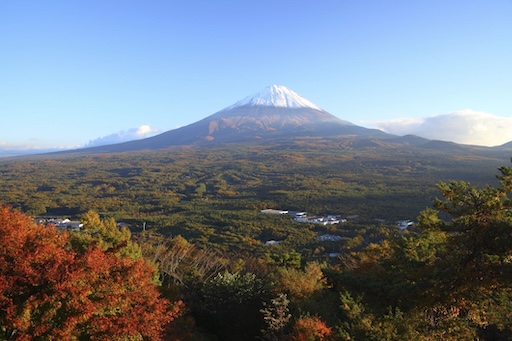 Aokigahara Forest – The Magnetic Silence of Mount Fuji’s Lava Woods
Aokigahara Forest – The Magnetic Silence of Mount Fuji’s Lava Woods
 The Sacred Corn Festivals – When Maize Becomes a God
The Sacred Corn Festivals – When Maize Becomes a God
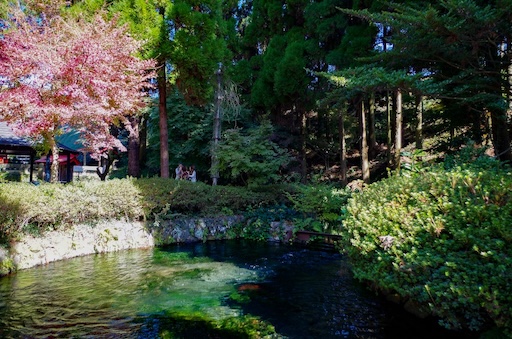 Shirakawa Suigen – Kumamoto
Shirakawa Suigen – Kumamoto
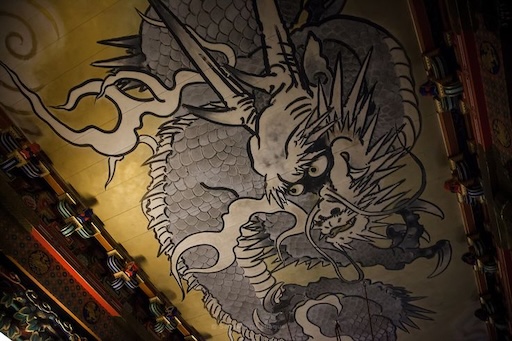 Nikko’s Crying Dragon – Tochigi
Nikko’s Crying Dragon – Tochigi
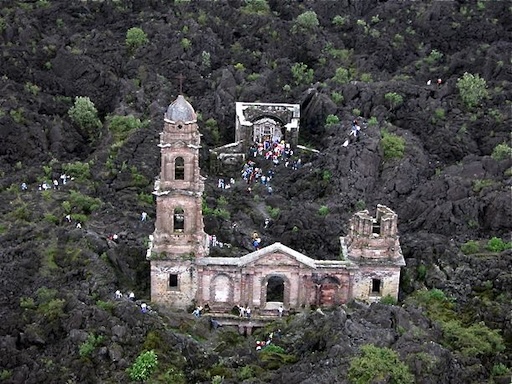 Paricutín Volcano – The Volcano That Was Born in a Cornfield
Paricutín Volcano – The Volcano That Was Born in a Cornfield
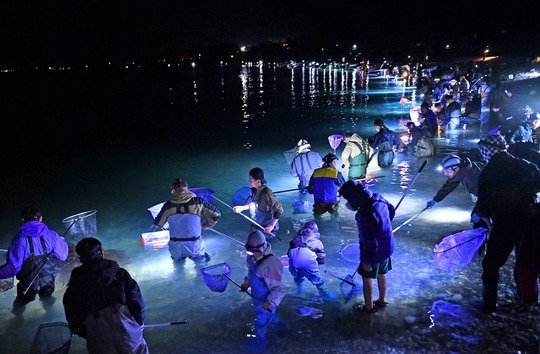 Bioluminescent Firefly Squid (Hotaru Ika) – Toyama Bay
Bioluminescent Firefly Squid (Hotaru Ika) – Toyama Bay